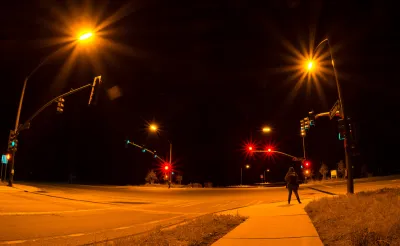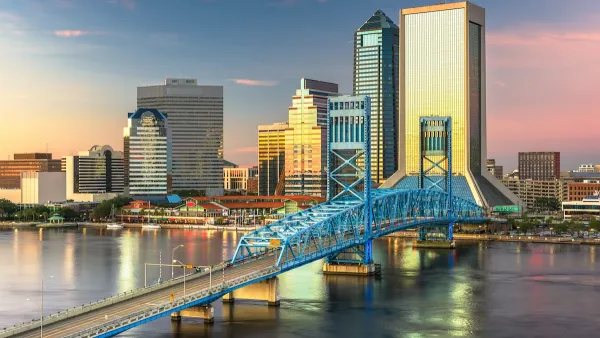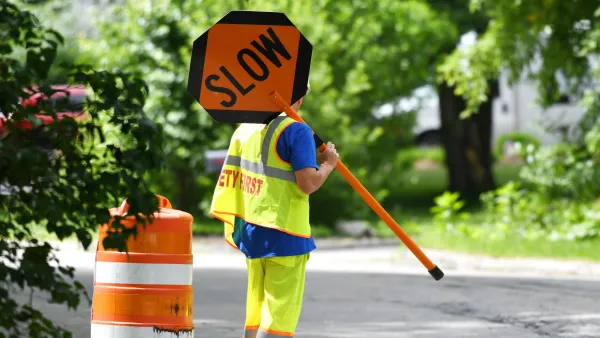Unlike in comparable countries, U.S. pedestrians are most likely to die in traffic crashes during nighttime hours.

Building on prior research on the growing U.S. pedestrian safety crisis, a New York Times article by Emily Badger, Ben Blatt, and Josh Katz highlights the high number of deaths that occur at night. “In 2021, more than 7,300 pedestrians died in America — three in four of them during the hours between sunset and sunrise.”
This stands in contrast with other countries. “In places like Canada and Australia, a much lower share of pedestrian fatalities occurs at night, and those fatalities — rarer in number — have generally been declining, not rising.”
Researchers say that they largely missed this trend until recently. “Federal data that tracks every roadway fatality makes clear that the problem is not just about the behaviors and routines that happen to occur around nighttime (leaving work, for example, or going to bars). It is darkness itself that matters.” This is likely in part because pedestrians are harder to see at night, and “American roads also weren’t particularly engineered with this risk in mind.”
According to David Strayer, a psychologist at the University of Utah, “What has changed is the amount of technology that we’re surrounding ourselves with.” Combined with the pervasiveness of automatic transmissions, the proliferation of smartphones in the United States has made drivers more distracted, while the growing size of vehicles makes drivers less likely to see pedestrians.
The article details other potential factors, such as population growth in areas with poor pedestrian infrastructure. Ultimately, the authors conclude, better infrastructure designed with these potential risks in mind could save lives. “A transportation system that’s safer by design — as in many European countries — might better absorb any one of these dangers. Distracted drivers are safer at lower speeds. People out at night are safer with well-lit crosswalks.”
FULL STORY: Why Are So Many American Pedestrians Dying at Night?

National Parks Layoffs Will Cause Communities to Lose Billions
Thousands of essential park workers were laid off this week, just before the busy spring break season.

Retro-silient?: America’s First “Eco-burb,” The Woodlands Turns 50
A master-planned community north of Houston offers lessons on green infrastructure and resilient design, but falls short of its founder’s lofty affordability and walkability goals.

Delivering for America Plan Will Downgrade Mail Service in at Least 49.5 Percent of Zip Codes
Republican and Democrat lawmakers criticize the plan for its disproportionate negative impact on rural communities.

Test News Post 1
This is a summary

Test News Headline 46
Test for the image on the front page.

Balancing Bombs and Butterflies: How the National Guard Protects a Rare Species
The National Guard at Fort Indiantown Gap uses GIS technology and land management strategies to balance military training with conservation efforts, ensuring the survival of the rare eastern regal fritillary butterfly.
Urban Design for Planners 1: Software Tools
This six-course series explores essential urban design concepts using open source software and equips planners with the tools they need to participate fully in the urban design process.
Planning for Universal Design
Learn the tools for implementing Universal Design in planning regulations.
EMC Planning Group, Inc.
Planetizen
Planetizen
Mpact (formerly Rail~Volution)
Great Falls Development Authority, Inc.
HUDs Office of Policy Development and Research
NYU Wagner Graduate School of Public Service





























